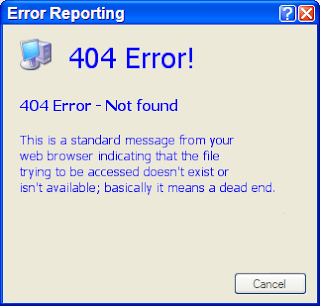Buffer Overflow Attack
A buffer overflow attack is a type of attack where an attacker sends more data to a program than it can handle, causing the program to crash or behave in unexpected ways. buffer overflow occur when volume of data exceeds the storage capacity of buffer.
What is buffer
A buffer is a temporary storage area in a computer's memory that is use to hold data while it is being process or transfer between different components of a system. Buffers are commonly use in computer systems to help manage the flow of data between different parts of a program or between programs and devices such as hard drives, network interfaces, and graphics cards.
buffer overflow attack is often use to exploit vulnerabilities in software and gain unauthorized access to a system.
Attackers exploit this attack by overwriting the memory of an application. This changes the execution path of the program, triggering a response that damages files or expose private information.
Overwriting adjacent memory locations
Overwriting adjacent memory locations refers to the action of modifying the contents of memory locations that are next to each other in a computer's memory. In a buffer overflow attack, an attacker intentionally sends more data to a program than it is designed to handle, causing the excess data to overwrite adjacent memory locations that contain critical data.
By overwriting adjacent memory locations, the attacker can cause the program to behave in unexpected ways, such as executing arbitrary code or crashing. This can also lead to a security vulnerability that the attacker can exploit to gain unauthorized access to the system or sensitive information.
It is important for software developers to implement security measures to prevent buffer overflow attacks, such as properly validating user input and limiting the size of input data to prevent buffer overflows. Additionally, developers can use programming techniques such as secure coding practices and memory-safe languages to prevent buffer overflow attacks.
Now, we are going to discuss about how buffer overflow attack work and how to prevent it.
Here's how it works:
- The attacker identifies a vulnerability in the target software that allows them to send more data than the program can handle.
- The attacker then sends a specially crafted input to the program that exceeds the buffer size allocated for it, causing the program to overwrite adjacent memory locations.
- If the attacker is able to overwrite specific memory locations, they may be able to change the program's behavior, execute malicious code, or gain unauthorized access to the system.
- In some cases, the attacker may be able to take control of the system entirely by running arbitrary code.
we can prevent Buffer overflow attacks by using programming techniques such as input validation and bounds checking to ensure that programs do not accept more data than they are design to handle. Additionally, keeping software up-to-date with the latest security patches can help prevent buffer overflow vulnerabilities from being exploit.
Buffer overflow attacks can be prevent using:
- Address Space Layout Randomization
- Data Execution Prevention
- Structured Exception Handling Overwrite Protection
Address Space Layout Randomization
ASLR stands for Address Space Layout Randomization, which is a security technique use to protect computer systems from certain types of attacks. ASLR works by randomly arranging the memory addresses where system components and user programs loads, making it difficult for attackers to predict the location of specific pieces of code or data in memory.
The basic idea behind ASLR is to add a layer of unpredictability to the memory layout of a system. By randomly assigning memory locations to different system components and program modules, an attacker cannot rely on fixed memory addresses to launch a successful attack. Even if an attacker is able to exploit a vulnerability in a system component, they may not be able to predict where their malicious code will be load into memory.
It is often use in combination with other security techniques, such as stack canaries, non-executable memory, and code signing, to provide a multi-layer defense against various types of attacks. It is commonly use in modern operating systems, such as Windows, Linux, and macOS, to help protect against buffer overflow attacks, stack-based attacks, and other types of memory-related vulnerabilities.
Data execution prevention
Data Execution Prevention (DEP) is a security feature in modern operating systems, including Windows, Linux, and macOS, designed to prevent certain types of malicious attacks. DEP works by preventing code from being executing in certain parts of memory that are reserve for data, such as the stack and heap.
DEP is design to prevent attacks that exploit buffer overflow vulnerabilities, which occur when an attacker is able to overwrite memory locations with their own code. By preventing code from being executing in certain parts of memory, DEP makes it more difficult for attackers to exploit buffer overflow vulnerabilities to execute their own code.
DEP can be implemented in hardware, software, or both. When implemented in hardware, DEP uses processor-level features such as the NX (no-execute) bit to prevent code from being executing in certain parts of memory. When implemented in software, DEP uses operating system-level features to enforce memory protection.
DEP is an important security feature that helps prevent a wide range of attacks, including buffer overflow attacks, stack-based attacks, and other types of memory-related vulnerabilities. Most modern operating systems have DEP enable by default, but it can be disable if necessary for compatibility reasons. However, disabling DEP can increase the risk of certain types of attacks, so it is generally recommended to keep it enabled whenever possible.
Structured Exception Handling Overwrite Protection
SEHOP stands for Structured Exception Handling Overwrite Protection, which is a security feature introduced in Windows Vista and later operating systems to protect against certain types of attacks. it is designed to prevent attackers from exploiting vulnerabilities in structured exception handling, a feature of the Windows operating system that allows programs to handle errors and exceptions.
it works by placing a guard page between the stack and the exception handler, making it more difficult for attackers to overwrite the exception handler with their own code. If an attacker attempts to overwrite the exception handler, SEHOP will detect the modification and terminate the process to prevent the attack from succeeding.
SEHOP is a useful security feature that helps protect against a wide range of attacks, including buffer overflow attacks, heap-based attacks, and other types of memory-related vulnerabilities. However, it is not a substitute for other security measures such as code signing, anti-virus software, and firewalls.
SEHOP is enabled by default on Windows Vista and later operating systems, and it can be further configured using the Windows Defender Security Center or other third-party security software. While SEHOP is a useful security feature, it may cause compatibility issues with certain software, so it may be necessary to disable it in some cases.
FAQ related to Buffer Overflow Attack
Q1 What causes buffer overflow attacks?
Ans. Buffer overflow attacks are caused by programming errors that allow an attacker to overwrite adjacent memory locations that should not be accessible, which can lead to unauthorized execution of code or system compromise.
Q2 How can buffer overflow attacks be prevented?
Ans. Buffer overflow attacks can be prevented by properly validating user input, limiting the size of input data, and implementing secure coding practices. Additionally, memory-safe languages can help prevent buffer overflow attacks.
Q3 What are the consequences of a successful buffer overflow attack?
Ans. The consequences of a successful buffer overflow attack can vary, but they can include unauthorized access to sensitive information, system crashes, and the execution of malicious code.
Q4 Are buffer overflow attacks common?
Ans. Yes, buffer overflow attacks are a common type of cyber attack and have been used to exploit vulnerabilities in a wide range of software and systems.
Q5 How can I detect a buffer overflow attack?
Ans. Buffer overflow attacks can be difficult to detect, but there are tools and techniques that can help identify them, such as using intrusion detection systems, analyzing system logs, and performing vulnerability assessments.


















